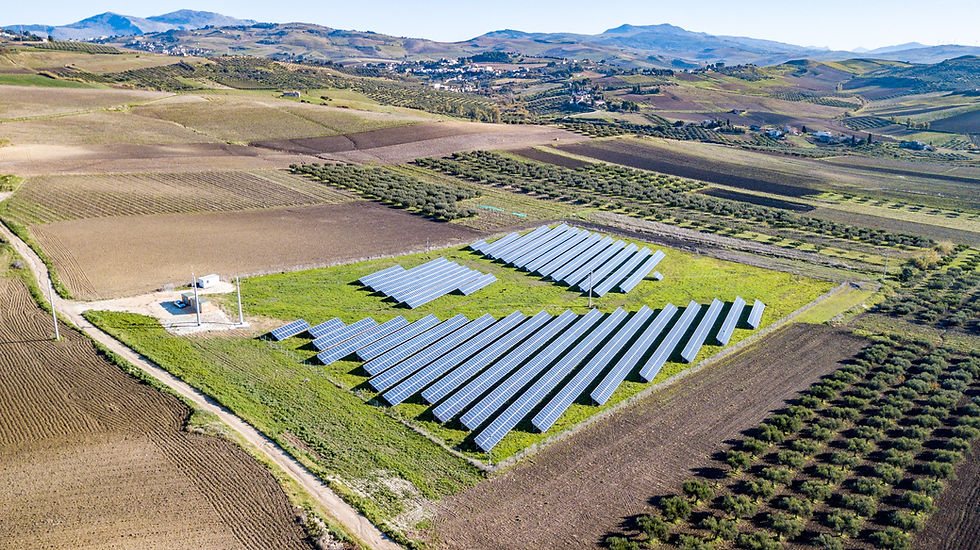Victoria’s 6 Renewable Energy Zones
- noeljohnson1
- Dec 23, 2020
- 3 min read
Updated: May 31, 2022
In the coming decade as Australia retires its ageing coal-fired plants, it will need to significantly invest in new generation and storage capacity to maintain grid reliability and affordability. The most cost effective way to achieve this is through a combination of renewable energy and energy storage technologies. But integrating them into the traditional network poses many challenges.

Challenges for Renewable Energy Integration
The transmission networks that were used as entry points for the traditional thermal power plants may not be fit for renewable energy power production. This is because the locations where the thermal power plants were commissioned might not have adequate renewable energy resources. Secondly, the grid was designed for a few large-scale thermal power plants to meet the overall electricity demand. Whereas now we have many small and medium scale renewable power generation which may be situated in regional areas. Thirdly, In traditional transmission planning, the infrastructure needed for transmission and the generation units were approved and built simultaneously since they had similar implementation durations. This approach is ill-suited for renewable energy development which has a short implementation time. These challenges can be overcome through the legislative power of the government.
What are Renewable Energy Zones?

The Australian Energy Market Operator (AEMO), in its Integrated System Plan, identified locations with the highest potential to develop into Renewable Energy Zones (REZs). REZ are geographic areas with large renewable energy resources identified by AEMO to develop into renewable energy powerhouses. They are like the equivalent of a power station. The main intent of identifying renewable energy zones is to allow for proactive expansion of existing transmission networks. It is not merely the isolated activity of mapping the potential energy resources available. It is the combination of mapping, along with construction and up-gradation of the transmission network that connects the renewable energy zones to the grid. This will allow us to build new generation and storage capacity in the National Energy Market cost-effectively.
What is included in Victoria’s 6 renewable energy zones?
The Victorian Government has pledged $543 million to fund six REZs across the state. The REZs will increase network capacity and coordinate the rollout of new generation and storage units with transmission infrastructure. Coordination will ensure that investment in the energy sector is timely, optimised and efficient. These 6 REZs are outlined in Figure 1 below.

Figure 1: Six different REZ's in VIC
South West Victoria
Western Victoria
Murray River
Central North Victoria
Ovens Murray
Gippsland
The South West Victoria REZ has a total committed and in-service wind generation of 1.7 GW. In dollar figures this represents around $1.7 billion. The REZ is expected to add another 2.6 GW of wind generation by 2040 once implemented. The Western Victoria REZ has existing and committed wind generation of 1 GW, the REZ is expected to add 0.4 GW solar generation and 1.5 GW of wind generation by 2040. The Murray River REZ has more than 0.64 GW of solar generation installed and committed, the REZ is expected to add another 0.6 GW solar generation by 2040. The Central North Victoria has existing and committed solar generation of 0.185 GW and is projected to add another 1.9 GW of solar generation and 0.65 GW of wind generation by 2040. The Ovens Murray REZ has been identified as a REZ due to its good pumped hydro resources. There is currently 0.77 GW of installed hydro generation within this zone and is projected to increase by 0.3 GW by 2040. The Gippsland REZ has an existing and committed wind generation of 0.12 GW and is projected to increase by 1.15 GW by 2040.
Conclusion
These new Renewable Energy Zones will help Victoria accelerate the transition away from fossil fuels and towards zero-emissions electricity generation. Businesses can use this opportunity to move away from fossil fuels, reduce their carbon emissions all while saving money. The solar PPA’s offered by Energy Terrain is a no investment option that aims to speed up this transition.

References
Australian Energy Market Operator. (2020). 2020 ISP Appendix 5. Renewable Energy Zones. July.
Baringa. (2020). Development of Renewable. Australian Renewable Energy Agency.
Greening the Grid. (2020). Renewable Energy Zone (REZ) Toolkit. Retrieved December 15, 2020, from https://greeningthegrid.org/Renewable-Energy-Zones-Toolkit
NSW Department of Planning, Industry and Environment. (2020). Renewable Energy Zones. NSW Government.
Perkins, M. (2020, November 26). From sunny north to windy east': What are Victoria's renewable energy zones? Retrieved from The Age: https://www.theage.com.au/national/victoria/from-sunny-north-to-windy-east-what-are-victoria-s-renewable-energy-zones-20201125-p56hsl.html
Vorrath, S. (2020, November 24). Victoria budgets $540m to develop six new Renewable Energy Zones. Retrieved December 15, 2020, from https://reneweconomy.com.au/victoria-budgets-540m-to-develop-six-new-renewable-energy-zones-66609/




Comments